Almost a week ago, on December 09, 2019, the Lok Sabha voted in favour of the contentious Citizenship Amendment Bill. Following this, the Rajya Sabha also voted in favour of the bill on December 11, 2019.
#CitizenshipAmendmentBill2019 has been introduced in #LokSabha.
— Meghnad (@Memeghnad) December 9, 2019
Here are the vote results.#SansadWatch pic.twitter.com/lhkrZEB5oX
And on December 12, 2019, after receiving the President’s assent, the Citizenship Bill became an act. However, across India, people have been protesting against the act.
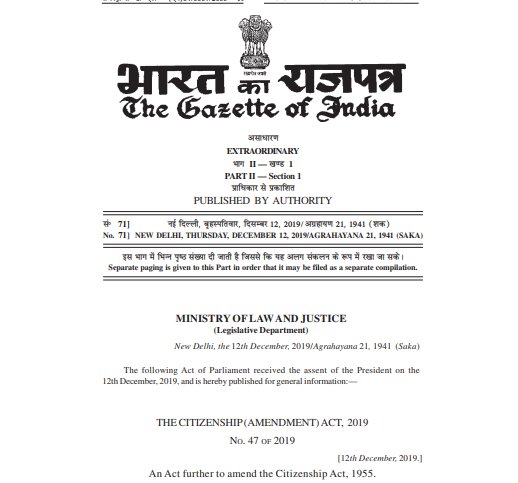
From the time the bill was introduced in the Lok Sabha, and even after it became an act, the contentious Citizenship Amendment Act has not been supported by a section of the society.
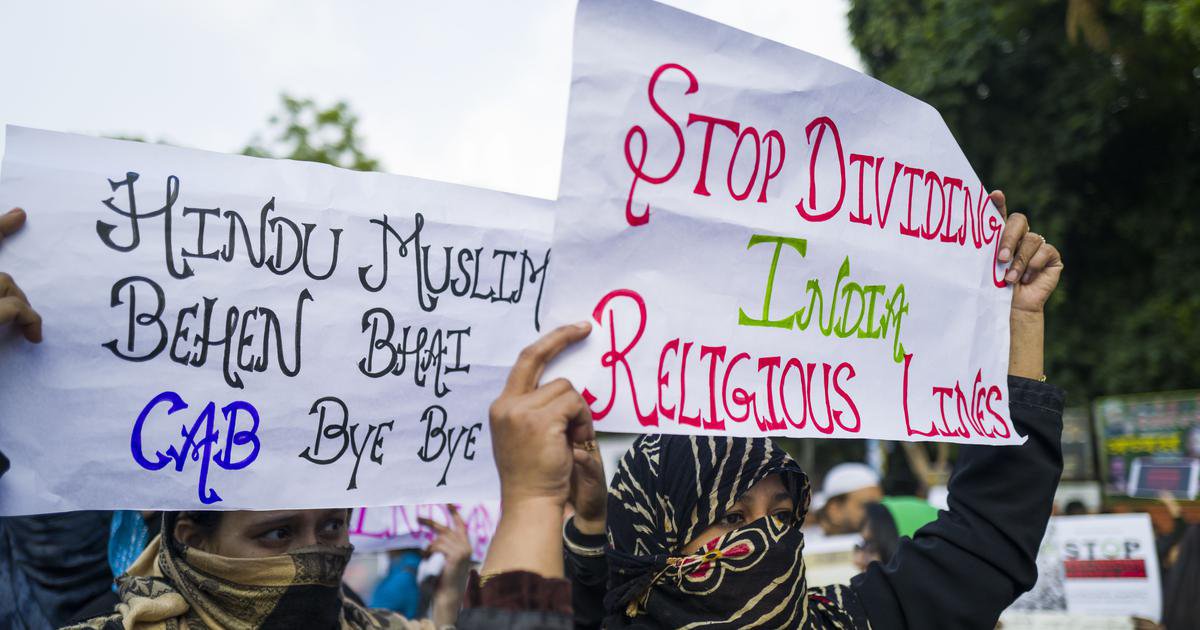
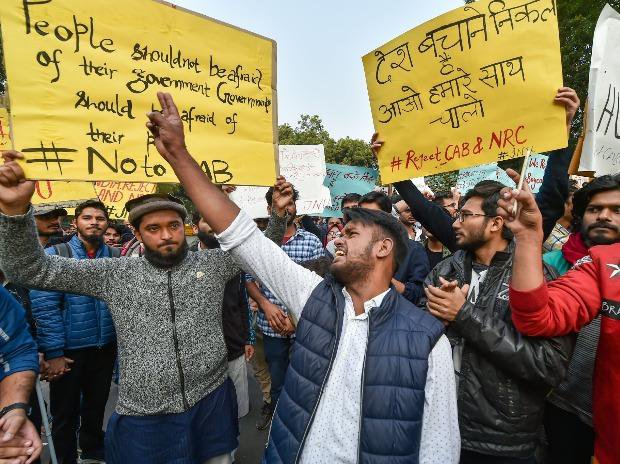
Here’s a timeline of the incidents and protests that have taken place across India, since the introduction of the bill:
As the bill was passed by both the houses, protests began across the country. #NoToCab began trending on Twitter as people took to social media to comment on the contentious bill.
We the people of Assam are completely against CAB. No CAB means No CAB. #AssamRejectsCAB #NoToCAB @narendramodi @PMOIndia @BBCIndia @BBCWorld @aajtak @ABPNews @cnni @FoxNews @SkyNews @MSNBC @euronews @ndtv @pratidintime @CNBC_Awaaz pic.twitter.com/V5F61U6CuS
— Nabanita Chutia (@NabanitaChutia) December 11, 2019
Mainstream media will not show you this. Large scale protests in Assam and North East regarding Citizenship Bill
— Dhoni 2.0 (@captaindhoni77) December 11, 2019
Internet shutdown in Tripura for 48 hrs#NoToCAB #cab_नहीं_चलेगा pic.twitter.com/DqrDalfRzD
Even as the bill got the president’s assent, the protests continued to grow across the country, especially in the North-eastern states of Assam, Tripura, and Meghalaya where the internet wast shutdown, Section 144 was imposed and the region was put under curfew.
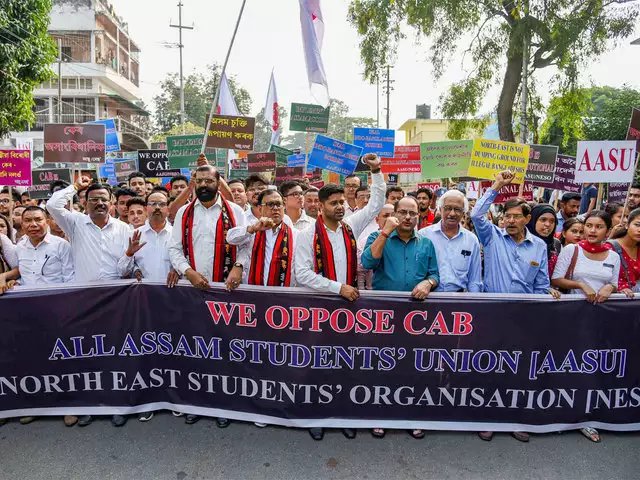
Curfew imposed in Shillong city w.e.f. 12/12/2019 from 10:00 pm onwards till further notice. Anti CAB movement hits Meghalaya. pic.twitter.com/Arfopzr8eo
— Paragmoni Aditya (@paragaditya) December 12, 2019
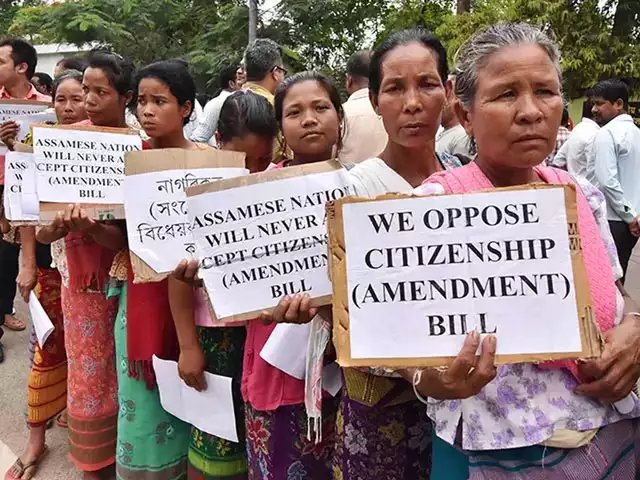
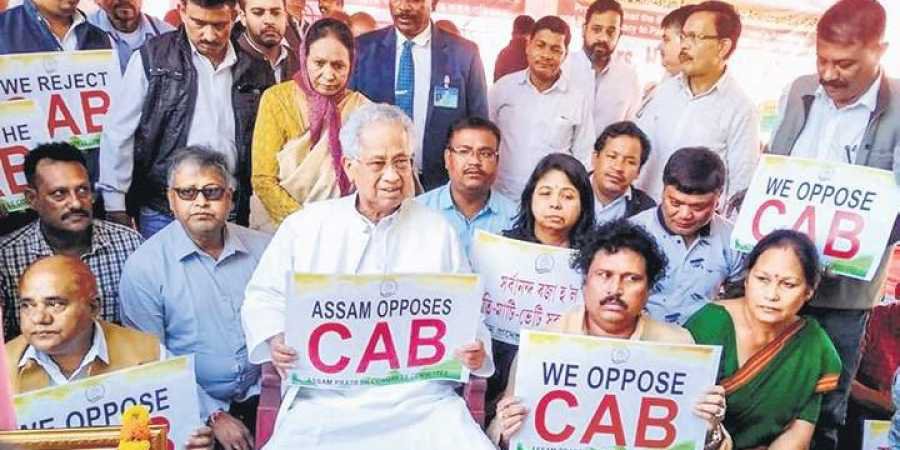
Meghalaya, Tripura, Nagaland, Assam, Arunachal Whole northeast is under cage now, Curfew Fitted, No mobile service, Army marching, Many protesters died till now, Bangladesh Ministers cancel their Indian visit & why this happened just bcz of #NRC #CAB#Amit_Shah_is_New_Jinnah
— Zuhaib Afridi (@zuhaibafridi6) December 13, 2019
Direct fight between indigenous people and pro #CAB BJP supporters in Tripura .
— Dr Jwala Gurunath (@DrJwalaG) December 10, 2019
Disturbing pictures of voilence .#CitizenshipAmendmentBill2019 #CABAgainstConstitution #Tripura pic.twitter.com/seUkVZ0rmH
While the majority of protests, by the opposition and in other parts of the country, are for the specific exclusion of one religious group (Muslims), in Assam the protests are against amendments introduced. Because the amendments are reportedly in violation of the Assam Accord of 1985. In layman terms, granting citizenship to illegal immigrants of any religious identity is a violation of the Assam accord.
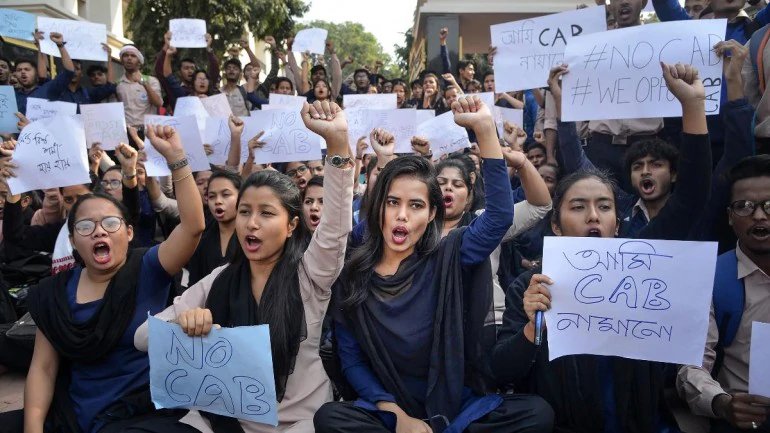
In Assam, the protests took a violent turn as protestors called for the boycott of the Indo-Japan summit in the city, while also protesting outside the houses of MLAs.
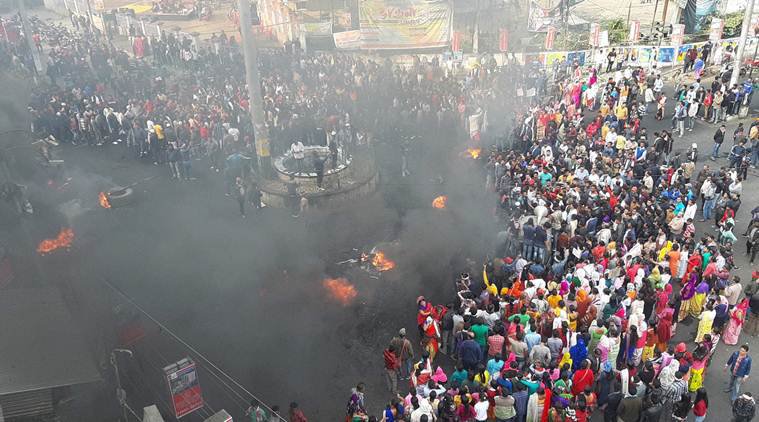
A temporary stage and a billiboard meant for Modi-Abe meet burnt down by protestors in Guwahati, #Assam. Massive clashes underway. #CitizenshipAmmendmentBill2019 pic.twitter.com/rhpMwHbNva
— Ahmer Khan (@ahmermkhan) December 11, 2019
Assam: Bus torched by protesters, near Janta Bhawan in Dispur, against #CitizenshipAmendmentBill2019 pic.twitter.com/yUAkYPjWtk
— ANI (@ANI) December 11, 2019
However, in a clash between the police and the protestors in Assam, some civilians–including a 17-year-old minor–also lost their lives.
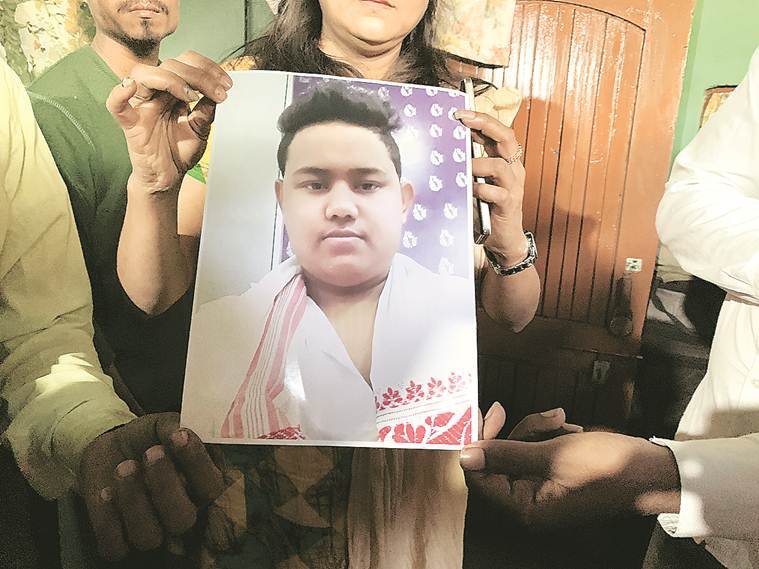
At the same time, an advisory was issued to the Indian media to be careful about information which may contain ‘anti-national attitudes’.
.@MIB_India issues advisory to all private satellite TV Channels under the Cable Television Networks, Act.
— PIB India (@PIB_India) December 12, 2019
Check out https://t.co/869fDMWIbb pic.twitter.com/fmtxbyaeEg
Simultaneously, the Japan PM Shinzo Abe canceled his visit to India. Soon after, a travel advisory was issued by US, UK and other countries, warning their citizens against traveling to India.
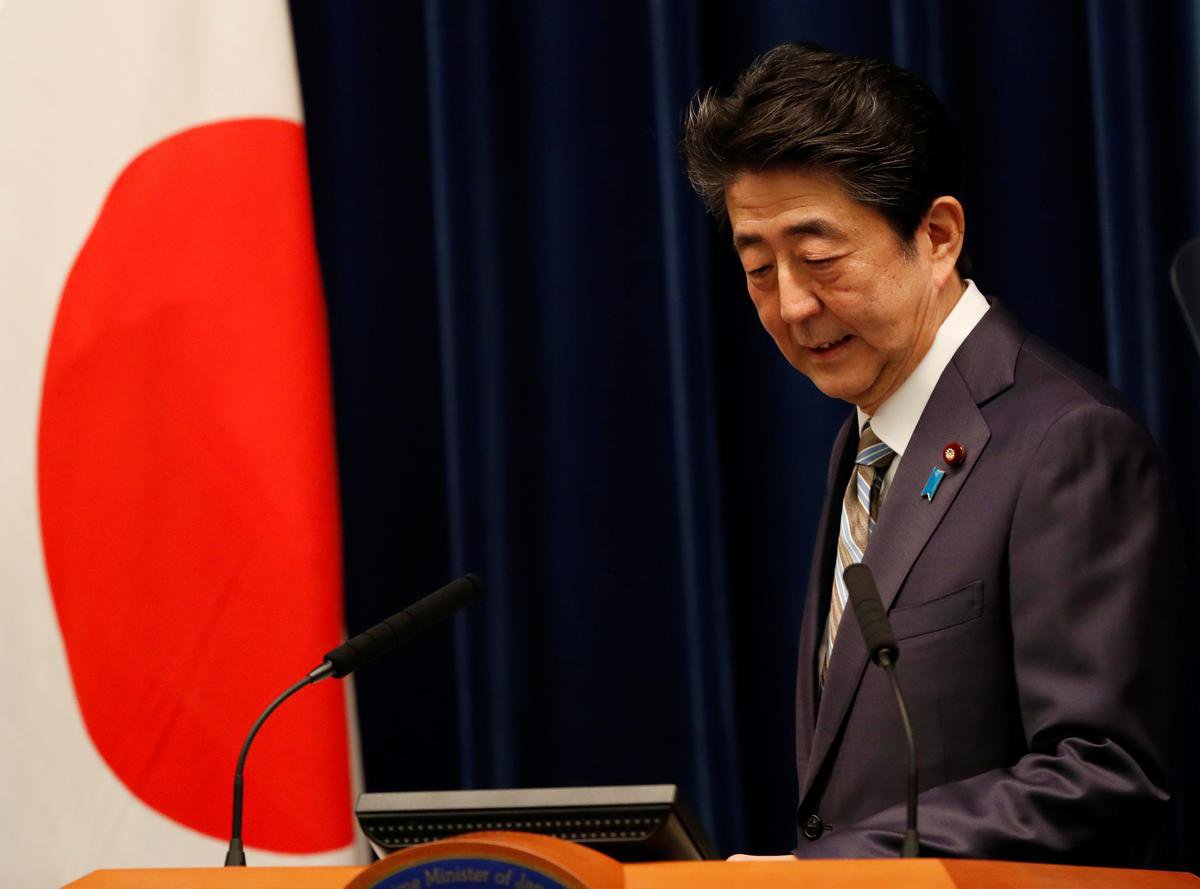
Meanwhile, protests took place across various parts of India, including Delhi, Mumbai, Pune, Goa, Bhopal, Hyderabad, and many other cities. For the most part, these protests were peaceful in nature.
At the #CABProtests in jantar mantar in Delhi. #NotInMyName and not under this constitution. Not in this country. When the government uses parliament against the constitution, the people will have to protect the heart of india , and every platform will be our parliament. pic.twitter.com/cQHu25hjdJ
— Nikhil Dey (@nikhilmkss) December 14, 2019
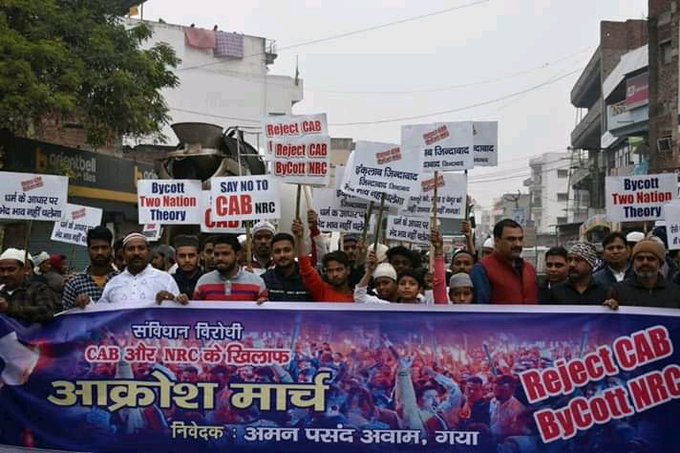
Sarfaroshi ki tamanna ab hamare dil mein hai…#IndiaAgainstCAB #RejectCAB#CitizenshipAmendmentAct2019
— باجی (@pepper_smoker) December 13, 2019
Jamia, Delhi. pic.twitter.com/UKxn2CUDkB
However, on December 15, 2019, the internet was suspended in parts of West Bengal as violent protests against CAA continued for the third day in a row.
Law and order completely break down in #WestBengal in the last 48 hours some organizations & mobs damaged police station, railway stations pelted stones on ambulance, running trains , buses railway stations and 5 trains were set on fire in the name of CAB protests! #CABProtests pic.twitter.com/X2IaDhnDQE
— Mohan Krish (@Mohankrish2997) December 15, 2019
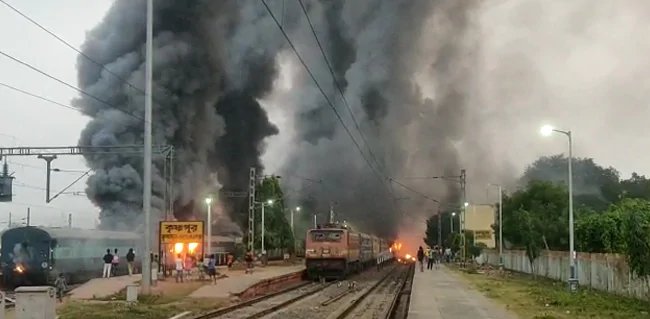
#CABProtests in #WestBengal: Mob at a large number blocks railway tracks at #Sankrail station in #Howrah, resulting a major train service disruption in #SouthEasternRailway‘s Howrah-Kharagpur division. #Kolkata #CAB pic.twitter.com/BIy0zztF1D
— Deepayan Sinha (@sdeepayan) December 14, 2019
At the same time, a blame game also started between political leaders, witch each party blaming the other for contributing to the protests, rather than maintaining law and order.
Few people took money from BJP and indulged in vandalism and arson, alleges Chief Minister Mamata Banerjee amid violence in Bengal
— Press Trust of India (@PTI_News) December 16, 2019
However, on December 15, 2019, as students from Jamia University in Delhi continued to protest, the protests took an unexpectedly violent turn. In the middle of the protests, a bus was burnt in Delhi. Following this, there was stone pelting by police and protestors in various areas.
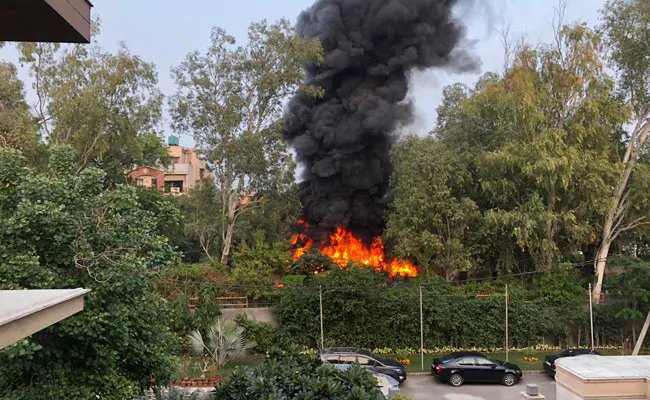
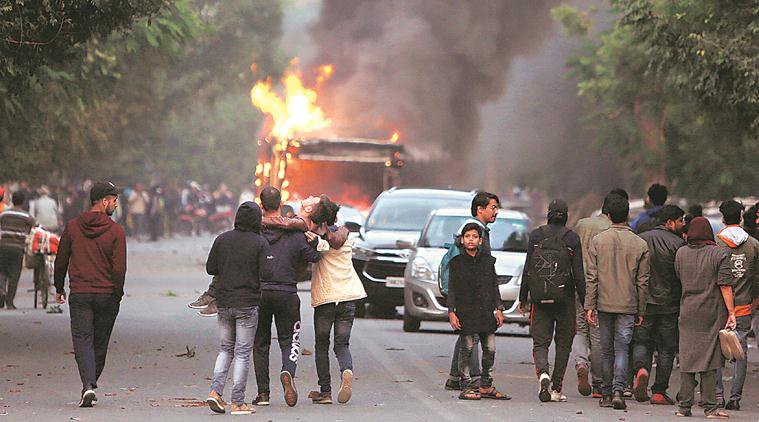
The group of Jamia students released a statement, disassociating themselves with the violence. However, armed police officers barged inside the university campus and launched an allegedly unprovoked attack. Exits and entries to 11 metro stations were closed.
Group of Jamia Millia students issues statement disassociating themselves from violence during protest against Citizenship Act
— Press Trust of India (@PTI_News) December 15, 2019
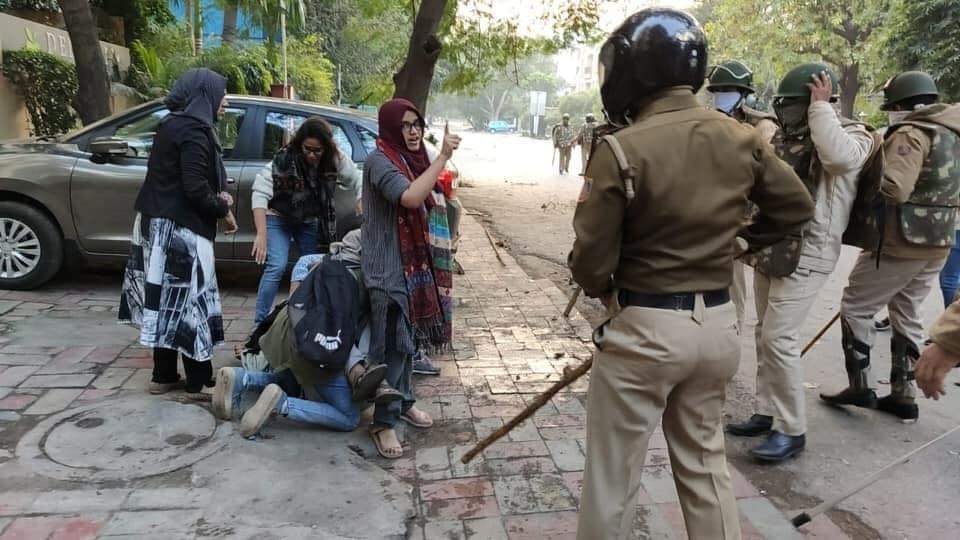
Various people took to social media to share instances of police brutality, which included launching tear gas in a library (an enclosed space), firing bullets at the students, and detaining over 50 students.
I am going to document police brutality in this thread against protestors. #CABProtest #IndiaAgainstCAB
— Yawer. (@Biryani_) December 15, 2019
– Young girls who were protesting badly beaten. Some of them injured. pic.twitter.com/puw1WqMCtW
Allegedly, some of the students dragged and detained by the police personnel were not a part of the protest, but actually studying in the library. Students were also made to raise their hands and leave the hostels/campus late at night.
NDTV speaks to students being marched out with hands held up outside Jamia Millia Islamia university in #Delhi. pic.twitter.com/FHRmNm2Eqj
— NDTV (@ndtv) December 15, 2019
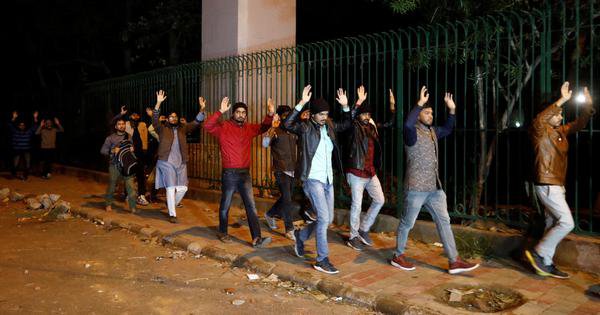
The detained students were released the next day, but as per the statements released by the lawyers, the students were allegedly abused (sexually and physically) when detained.
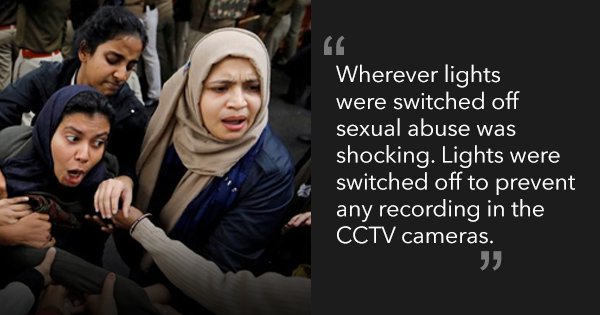
Statement by @harsh_mander and Kabir Ali Zia Choudhari, lawyer who is representing some of the detained students. pic.twitter.com/L3ggFtBGzn
— Angshukanta (@angshukanta) December 15, 2019
AP Siddiqui, Registrar of Jamia Millia Islamia, on reports that Police entered the mosque at the campus and also sexually assaulted girl students: Lot of rumours are being floated on social media. We can’t confirm or deny all of them. https://t.co/sGBh7xNoVw
— ANI (@ANI) December 16, 2019
Various authorities from Jamia stated that the police had no permission to enter the universities, and it was an unprovoked act on the staff and students.
Waseem Ahmed Khan, Chief Proctor, Jamia Millia Islamia University: Police have entered the campus by force, no permission was given. Our staff and students are being beaten up and forced to leave the campus. pic.twitter.com/VvkFWtia1G
— ANI (@ANI) December 15, 2019
The security guard of Jamia gate saying the police had no permission to enter University so they tried to stop but were brutally beaten up. How can Police beat up university security? #DelhiPolice #JamiaMilia
— Sanjukta Basu (@sanjukta) December 16, 2019
Police entered our campus without permission, students were studying and working: Jamia VC Najma Akhtar
— Press Trust of India (@PTI_News) December 16, 2019
Amidst the clash between the police and the students, certain reporters were also hurt and mistreated by the police. However, certain police officers were also injured during the protests.
Bushra Sheikh, Journalist: I came here for BBC’s coverage, they (police) took away my phone,broke it.A male police personnel pulled my hair.They hit me with a baton&when I asked them for my phone they hurled abuses at me.I didn’t come here for fun,I came here for coverage https://t.co/x7GpU6flfd pic.twitter.com/pB8ph94WW9
— ANI (@ANI) December 15, 2019
#WATCH Delhi: ANI Reporter Ujjwal Roy and Cameraperson Sarabjeet Singh were assaulted while covering protests near Jamia Milia Islamia University Gate-1. They are currently undergoing treatment at Holy Family hospital (video courtesy: Prashant Kumar,Times Now) pic.twitter.com/zGJhrMpEBl
— ANI (@ANI) December 16, 2019
Delhi Police PRO, MS Randhawa: Around 30 police personnel received injuries, 2 SHO suffered fractures, one of our personnel is in ICU. 2 FIRs have been registered for rioting and arsoning. Crime Branch will investigate the matter from all angles. https://t.co/2JVs6cKVXq
— ANI (@ANI) December 16, 2019
As a result, many students marched to the ITO to protest at the police HQ against police presence at the university, and the consequent violence.
At ITO in Delhi, in front of the old headquarters of the Delhi Police, a few protesters have now climbed on top of the police barricade carrying pictures of Mahatma Gandhi and BR Ambedkar. https://t.co/kpfykeJApu pic.twitter.com/YhKuF96qGU
— Rohan Venkat (@RohanV) December 15, 2019
At ITO right now, after the police action at Jamia, protest on at Delhi police HQ pic.twitter.com/WksXEC9c4c
— Aarish Chhabra (@aarishc) December 15, 2019
Protest at Delhi Police HQ by Jamia students, alumni and believers in Indian Constitution demanding the immediate release of Jamia students who are still in police custody. #JamiaMilia #JamiaMilliaIslamia #JamiaProtestsCAB pic.twitter.com/giGEjk8Set
— Kunal Majumder (@kunalmajumder) December 15, 2019
Here also, political parties indulged in a blame game rather than actively work to control the violence.
Delhi BJP chief Manoj Tiwari accuses Dy CM Manish Sisodia of circulating "fake" video to allege that a bus was torched under police protection during protest over amended Citizenship Act in Jamia Nagar on Sunday
— Press Trust of India (@PTI_News) December 16, 2019
At the same time, students of Aligarh Muslim University were also protesting against the CAB. Consequently, protests took a violent turn in AMU as well, where videos of police personnel attacking with weapons, other than tear gas, surfaced on the internet. The videos also showed that bikes were vandalized by police personnel.
Just gutted watching this video from AMU sent by a student pic.twitter.com/WyLrsYOvhD
— Rana Ayyub (@RanaAyyub) December 15, 2019
Cops seen smashing bikes after protests erupt at Aligarh University https://t.co/t3x2D1d2j2 pic.twitter.com/OIowo9ES3l
— NDTV Videos (@ndtvvideos) December 15, 2019
32 Thousand AMU students protest against #CitizenshipAmendmentBill
— HK (@ThePakPearl) December 14, 2019
pic.twitter.com/8mGywA7v2A
Additionally, students from various universities across India, including but not limited to BHU, TISS, IIT-Bombay, JNU, etc. came out in support of the Jamia students.
#LIVE: TISS Students against atrocities on Students of Jamia, AMU and Northeast. @IndianExpress @ie_mumbai pic.twitter.com/6CJ81x1pQI
— Abha Goradia (@AbhaGoradia) December 15, 2019
Huge protest and unrest at #MANUU #Hyderabad condemning Delhi police action at #JamiaMilliaIslamia #CAAprotest pic.twitter.com/w2ABsqvwos
— Uma Sudhir (@umasudhir) December 15, 2019
Banaras Hindu University students protesting against Citizenship (Amendment) Act 2019 & nationwide NRC #RejectCAB #BHU
— Tarique Anwer (@tanwer_m) December 14, 2019
pic.twitter.com/UPyJFfruH2
Today, on December 16, 2019, 7 days after the bill was first introduced in the Lok Sabha, the protests continue to rage across India. The students of Jamia University formed a human chain to once again, peacefully protest, against the CAA.
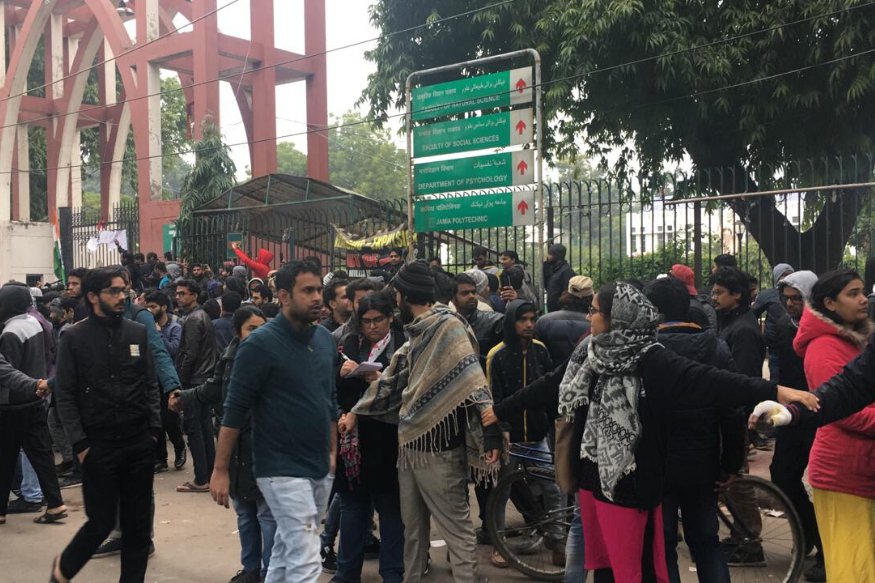
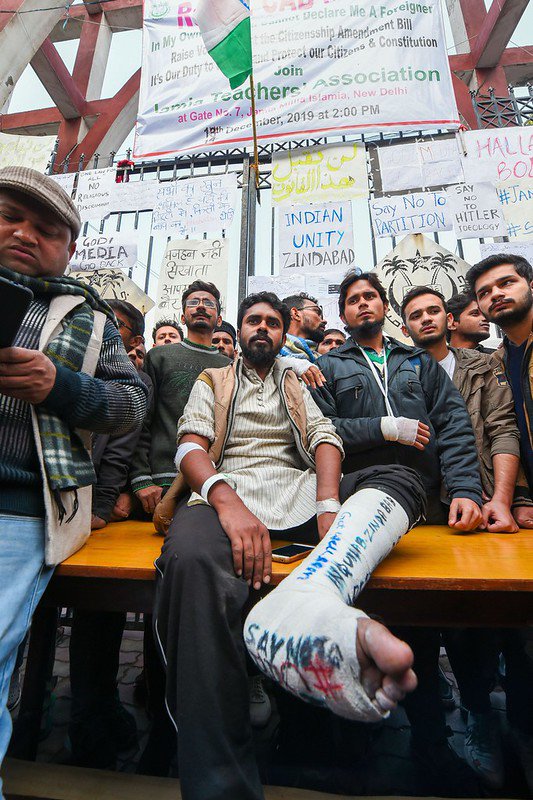
According to ANI, the police personnel claimed that they acted to control the violence incited by the protesting mob. The Supreme Court stated that it will look into the matter, but only if the violence comes to a halt.
Delhi Police PRO, MS Randhawa on Vice Chancellor of Jamia Millia Islamia saying police entered university without permission: When we started pushing rowdy elements, they went inside. Police also chased them, stones were being pelted at us. We are doing a detailed investigation. pic.twitter.com/cpsXpE5LGM
— ANI (@ANI) December 16, 2019
The only thing we want is that rioting must stop: SC on violent protests against Citizenship Act
— Press Trust of India (@PTI_News) December 16, 2019
Currently, both Jamia and AMU have been closed until the first week of January 2020. Certain schools have also been closed in Okhla, Jamia and New Friends Colony. The entry and exit gates for Jamia Millia Islamia metro station also remain closed. Additionally, the internet was shut down in Meerut, Aligarh, West Bengal, and other regions in India.
Entry and exit gates of Jamia Millia Islamia metro station closed; trains will not be halting there: DMRC
— Press Trust of India (@PTI_News) December 16, 2019
Internet services suspended in UP’s Meerut till Monday afternoon. https://t.co/v7xOFB7J8w#CitizenshipAct #AMUProtests #AligarhMuslimUniversity pic.twitter.com/LXNuEokWzK
— NDTV (@ndtv) December 16, 2019
Amidst the ongoing protests, PM Modi also tweeted about the CAA and asked people to maintain peace.
I want to unequivocally assure my fellow Indians that CAA does not affect any citizen of India of any religion. No Indian has anything to worry regarding this Act. This Act is only for those who have faced years of persecution outside and have no other place to go except India.
— Narendra Modi (@narendramodi) December 16, 2019
With the way the events are unfolding across the nation, it does not look like the debate around CAA will die anytime soon.

















